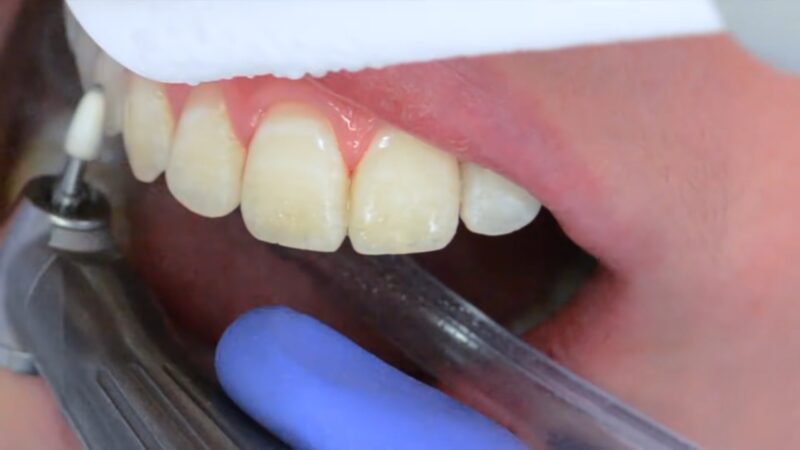Fluorosis is a health condition that has garnered attention worldwide due to its crippling effects on both the hard and soft tissues of the body. Resulting of an excessive intake of fluoride, this disease manifests in various forms, affecting teeth, bones, and even non-skeletal tissues.
In this comprehensive guide, we’ll get into the causes, symptoms, diagnosis, management, and prevention of fluorosis, aiming to provide valuable insights for a diverse readership. Fluorosis is a public health concern that arises from prolonged exposure to high levels of fluoride, primarily through drinking water, food products, and industrial pollutants.
Fluorosis Types
The disease can manifest in three major forms.
Dental Fluorosis
Dental fluorosis primarily affects children, leading to the discoloration and disfiguration of teeth. This condition is evident by staining, pitting, and in severe cases, damage to the entire enamel.
The teeth may appear chalky white and can have white, yellow, brown, or even black spots or streaks on the enamel surface.
Skeletal Fluorosis
Skeletal fluorosis targets the bones and major joints, causing severe pain, rigidity, or stiffness in areas like the neck, backbone, shoulder, hip, and knee joints. Advanced stages of this condition can result in marked disability, with the bone structure changing and ligaments calcifying.
Non-Skeletal Fluorosis
Non-skeletal fluorosis, often overlooked, develops long before the onset of changes in teeth and skeletal bones. Symptoms can range from gastrointestinal issues to neurological and muscular manifestations.
These symptoms may overlap with other diseases, leading to potential misdiagnosis.
Causes

Fluorosis is primarily caused by the excessive intake of fluorides. While drinking water remains the most significant source, there are multiple avenues through which one can ingest excessive fluoride.
Drinking Water
Water, especially from certain geological regions, can contain high levels of fluoride. Areas at the foot of high mountains or where geological deposits collect in seas are particularly susceptible.
Food and Other Sources
Several factors contribute to fluoride intake:
- Consumption of foods and beverages with high black rock salt content.
- Chewing tobacco or supari.
- Intake of certain drugs like fluoroquinolone antibiotics, anti-depressants, and more.
- Use of fluoridated toothpaste and beverages.
- Exposure to environmental sources like cigarette smoke and industrial pollution.
Diagnosing
Accurate diagnosis of fluorosis is crucial for effective management and prevention. Several tests and examinations can help in identifying the presence and severity of the condition.
Physical Tests
In endemic areas, physical tests can help detect skeletal fluorosis. These include the coin-lifting test, chin test, and stretch test, which assess an individual’s flexibility and joint stiffness.
Radiographs
X-rays can reveal changes in bone structure, ligament calcification, and other skeletal abnormalities indicative of fluorosis.
Laboratory Tests
Tests like the SA/GAG test, estimation of fluoride content in drinking water, blood, and urine, and hemoglobin estimation can provide valuable insights into the presence and severity of fluorosis.
Management
![]()
While certain forms of fluorosis, especially skeletal fluorosis, are irreversible, early detection and intervention can significantly reduce the disease’s progression and associated disabilities.
Dental
For those affected by dental fluorosis, several treatments can help improve the appearance of the teeth:
- Tooth Whitening: Suitable for mild cases, this treatment can restore the natural color of the teeth.
- Composite Bonding: This involves applying tooth-colored composite resin to the teeth to improve their appearance.
- Porcelain Veneers: Thin shells of porcelain are placed over the front of the teeth to enhance their appearance and protect them from further damage.
Skeletal
While there’s no definitive cure for skeletal fluorosis, efforts can be directed towards reducing the associated pain and disability. Pain management, physiotherapy, and lifestyle modifications can help improve the quality of life for affected individuals.
Non-Skeletal
Addressing the root cause, which is excessive fluoride intake, is crucial. Additionally, symptomatic treatment, such as managing gastrointestinal symptoms or muscular manifestations, can provide relief.
Prevention: The Key to Combat
Prevention is undoubtedly the most effective strategy against fluorosis. By understanding and addressing the primary sources of excessive fluoride intake, the incidence of fluorosis can be significantly reduced.
Water Sources and Treatment
Utilizing alternative water sources, such as rainwater or low-fluoride groundwater, can help. Additionally, defluoridation of water, using methods like chemical precipitation or adsorption, can effectively reduce fluoride levels in drinking water.
Nutritional Interventions
Improving the nutritional status of at-risk populations can act as a protective factor against fluorosis. Consuming foods rich in calcium, iron, vitamin C, and other antioxidants can help counteract the effects of fluoride.
Health Education and Awareness
Raising awareness about the dangers of excessive fluoride intake is crucial. Communities should be educated about safe water sources, the risks associated with certain foods and products, and the importance of early detection.
FAQ
How can I check the fluoride level in my water?
You can contact your local water utility or use a fluoride test kit available in the market to check the fluoride level in your water.
Can it be reversed?
Dental fluorosis is irreversible, meaning the discoloration and pitting of the teeth cannot be undone. However, its appearance can be improved with treatments like tooth whitening or veneers. Skeletal fluorosis, once developed, cannot be reversed, but its symptoms can be managed.
Is it contagious?
No, fluorosis is not contagious. It is caused by excessive intake of fluoride and is not transmitted from person to person.
Does bottled water contain fluoride?
Some bottled waters do contain fluoride, while others don’t. It’s essential to check the label or contact the manufacturer for specific fluoride content.
Can animals get fluorosis?
Yes, animals, especially those in areas with high fluoride content in water, can develop fluorosis. It’s crucial for livestock owners to ensure their animals have access to safe drinking water.
Are there any side effects to fluoride toothpaste?
Fluoride toothpaste is generally safe when used as directed. However, excessive ingestion, especially in children, can lead to dental fluorosis. It’s essential to use only a pea-sized amount for children and ensure they don’t swallow the toothpaste.
Can cooking with fluoridated water increase fluoride content in food?
Cooking with fluoridated water can increase the fluoride content in food, especially if the water evaporates during the cooking process. It’s advisable to use non-fluoridated water for cooking in areas with high fluoride levels.
Final Words: A Call to Action
Fluorosis, with its global prevalence, demands our attention. While the disease’s effects can be debilitating, with informed choices, early detection, and community awareness, we can pave the way for a fluorosis-free future.
Let’s take collective action, prioritize safe water sources, and champion health education to ensure a brighter, healthier tomorrow for all.

